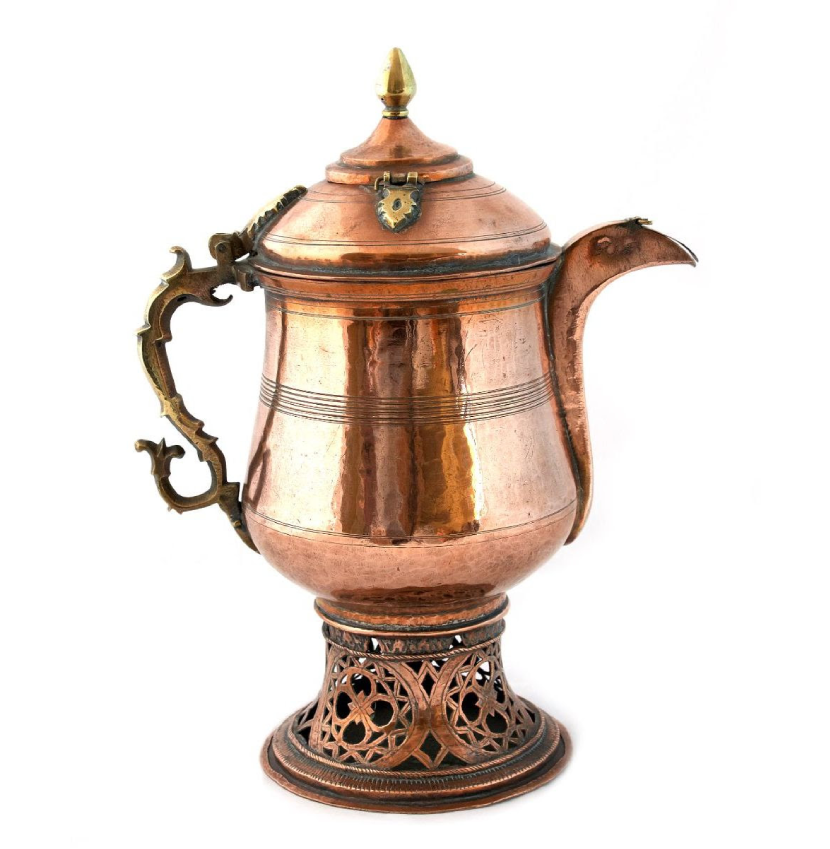Samovars originated in Russia to boil and heat water but these large urn-shaped samovars are typical of the Kashmir region of India. They are used to make and serve tea. In the base of each samovar there is a container for hot charcoal and coals that heat the water. Tea leaves, sugar, cardamom and cinnamon are added to the water to make the hot tea. Made of copper, samovars are highly decorative and often engraved or embossed with floral and calligraphic motifs.
The large copper samovars in The South Asia Collection were purchased in the Kasera Bazaar, Lahore, Pakistan in the late 1970s and early 1980s. Each bazaar in Lahore has a different speciality and the Kasera Bazaar is famous for its metalwork, particularly copper and brass. The Kasera Bazaar was established over 100 years ago and mostly sells domestic metalware items such as kitchen utensils, pots, bowls, dishes and samovars.
Most domestic copper items are originally tinned for drinking or eating purposes as copper reacts to acidic foods and can make the food taste strange (as well as occasionally causing mild poisoning!). Copper items in the bazaar sometimes have the tin removed and the copper highly polished to make them more attractive to purchase. The contrast between the tinned and polished copper is evident in these two examples. And in fact, the example here has only been lightly tinned.
Below left: detail from Samovar. Below right: the entrance to the copper section of the Kasera Bazaar, with copper shops on the right-hand side. Look closely, and you can see tin hanging in the shops.




